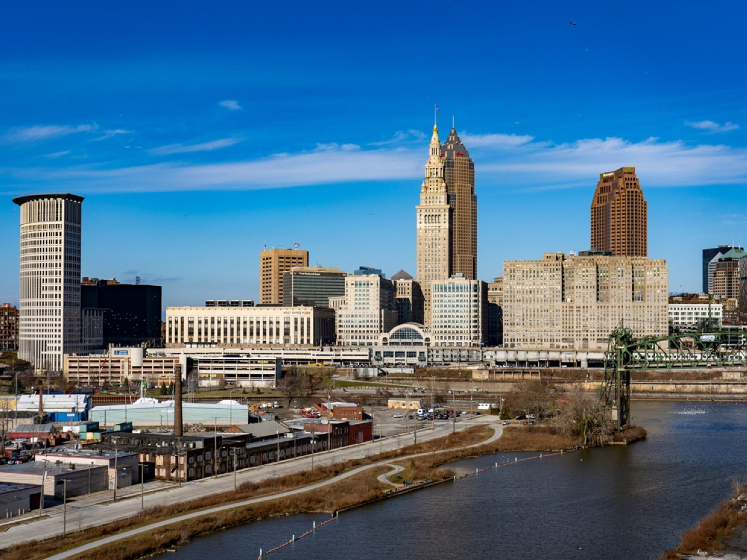 Buskers on the streets of New Orleans. Photo credit: Matthew LeJune on Unsplash
Buskers on the streets of New Orleans. Photo credit: Matthew LeJune on Unsplash
The case for empowering and investing in cities was already strong before the pandemic: after all, cities are where most people, inequalities, carbon emissions and other forms of pollution are concentrated. And while the pandemic clearly hit cities hard, it also demonstrated that city leaders are well-placed to steward their cities through these crises by remaining attuned to local needs, working across silos, and innovating to improve the quality of life for their residents.
Against this background, it’s been promising to see the two big Western economic superpowers, the US and the EU, apparently recognising the urgency of investing in urban recovery efforts. But the difference between their approaches has been instructive. And Europe has a lot to learn from the way the Biden administration has put hard cash directly into the hands of urban leaders, empowering them to make decisions about recovery priorities in their jurisdictions.
At first glance, there are quite a few parallels between the EU and US pandemic stimulus packages. In the US, the federal government launched the $1.9 trillion American Rescue Plan Act (ARPA). In the EU, the Recovery and Resilience Facility (RRF) is the centrepiece of the €800 billion NextGenerationEU. The ARPA and RRF are both meant as temporary recovery instruments, operate on similar timelines (the money needs to be spent by 2026), and both have the stated ambition of building greater resilience and supporting ‘transformative’ investments in local communities. The EU package is not quite as big as the American one, but then the RRF is complemented by additional national government spending in each member country. And in historic terms, these are very large amounts of funding that certainly have the potential to make a huge impact on the ground.
But the US approach differs in one crucial aspect from the EU funding package. ARPA includes $350 billion – roughly a sixth of the total - that is being funnelled directly to local governments via the State and Local Fiscal Recovery Fund (SLFRF). The SLFRF money can be used flexibly by cities, depending on the unique local priorities they identify. This includes not only immediate health and economic impacts of the pandemic but also an explicit encouragement to invest in critical public services such as broadband and sanitation systems, and address the underlying infrastructural deficits that undermined community resilience and exacerbated the effects of COVID-19. The US Treasury set out how the funds could be spent in 2021 but then solicited feedback from local governments and other experts before publishing final guidance in early 2022. This has provided certainty to local governments about how they could spend the funding and ensured that the concerns of local governments were taken on board to maximise impact on the ground.
We are talking about serious money here. Take Cleveland, Ohio, which is set to receive US$511 million in ARPA funding, representing nearly 30% of the city's total annual budget. And this is not an outlier, with many cities due to receive recovery funds that make up 20 – 50% of their budget. Given the major holes left in city budgets by the pandemic it is no surprise many are choosing to use the funds to cover operational shortfalls. The real test now will be what cities do with the remainder once basic fiscal health has been restored, and perhaps more importantly, how they will spend other recovery funding on the horizon, including the US$550 billion of new money that will be made available to local governments via the recently signed Infrastructure Investment and Jobs Act.
 Cleveland, Ohio is one of the cities set to receive significant direct funding through ARPA. Photo credit: DJ Johnson on Unsplash
Cleveland, Ohio is one of the cities set to receive significant direct funding through ARPA. Photo credit: DJ Johnson on Unsplash
The story in Europe is quite different. To access EU funds, individual member states need to submit national plans (NRRPs), demonstrating how the spending will align with the EU’s green and just transition agenda. Much to the dismay of many cities and city networks, subnational governments were not formally consulted in the planning stages of this process, and only have limited say over how or if the money is allocated to specific urban projects. In a Eurocities survey of their membership from last year, 63% of respondents said that consultations by their national government had been insufficient, and that the top-down approach was undermining the sort of multi-level cooperation that a successful recovery requires. Cities are now able to apply for funding through dedicated national calls, but these processes are not always easy to navigate, especially for smaller cities. It also leads to further delays in getting projects off the ground, which is a concern given the short window that the EU has set for the money to be spent.
This feels like a real missed opportunity to finally raise the profile of cities in EU policymaking. The EU had all kinds of levers at their disposal to empower city voices, including involving cities explicitly in the planning stages, ensuring that all NRRPs earmark a certain amount of funding for urban projects, or making local level consultation a requirement of funding disbursement. What’s more, there are already other EU funding mechanisms where cities have played a much more active role, with billions in funding from the EU Cohesion Policy going directly to projects managed by local and urban authorities. It is a shame that this same principle was not applied with the RRF. Directing recovery funding exclusively to national governments effectively means that some cities will miss out on vital funds, and these impacts will be unevenly distributed. Italy and Belgium for example have developed fairly robust partnerships that have ensured that projects proposed by cities have been included in their NRRPs from the outset, but it remains entirely up to individual countries to decide if and how cities get a share of the pie.
 Budapest, Hungary has so far not able to benefit from the EU recovery funding since the EU has not yet approved the Hungarian National Recovery and Resilience Plan. Photo credit: Andreas M on Unsplash
Budapest, Hungary has so far not able to benefit from the EU recovery funding since the EU has not yet approved the Hungarian National Recovery and Resilience Plan. Photo credit: Andreas M on Unsplash
Naturally, the US approach has not been without controversy, with Republicans especially sceptical that local governments can be trusted to spend federal dollars wisely. And it remains too early to say whether local governments will be able to seize the opportunity this funding represents to move the needle on some of the trickiest urban policy challenges, from the worsening homelessness crisis to crumbling and carbon-intensive infrastructure. While the devil will be in the detail when it comes to implementation, there is no doubt that this historic shift in federal funding allocations is a promising and bold experiment with huge potential to empower US cities to design a more sustainable urban future. When the EU develops its next ambitious investment programme, it should follow the example of the US and make sure that cities and their needs are at the heart of the process, rather than remaining an afterthought.